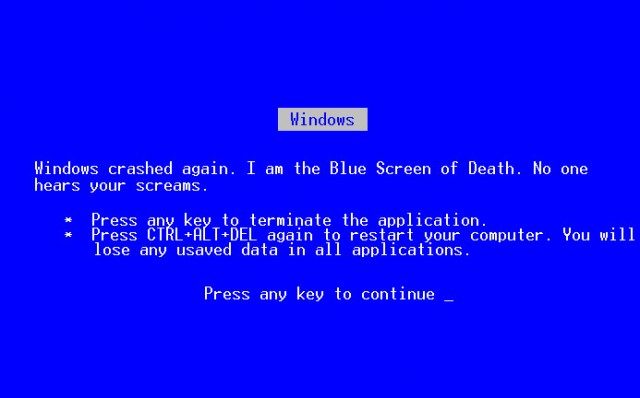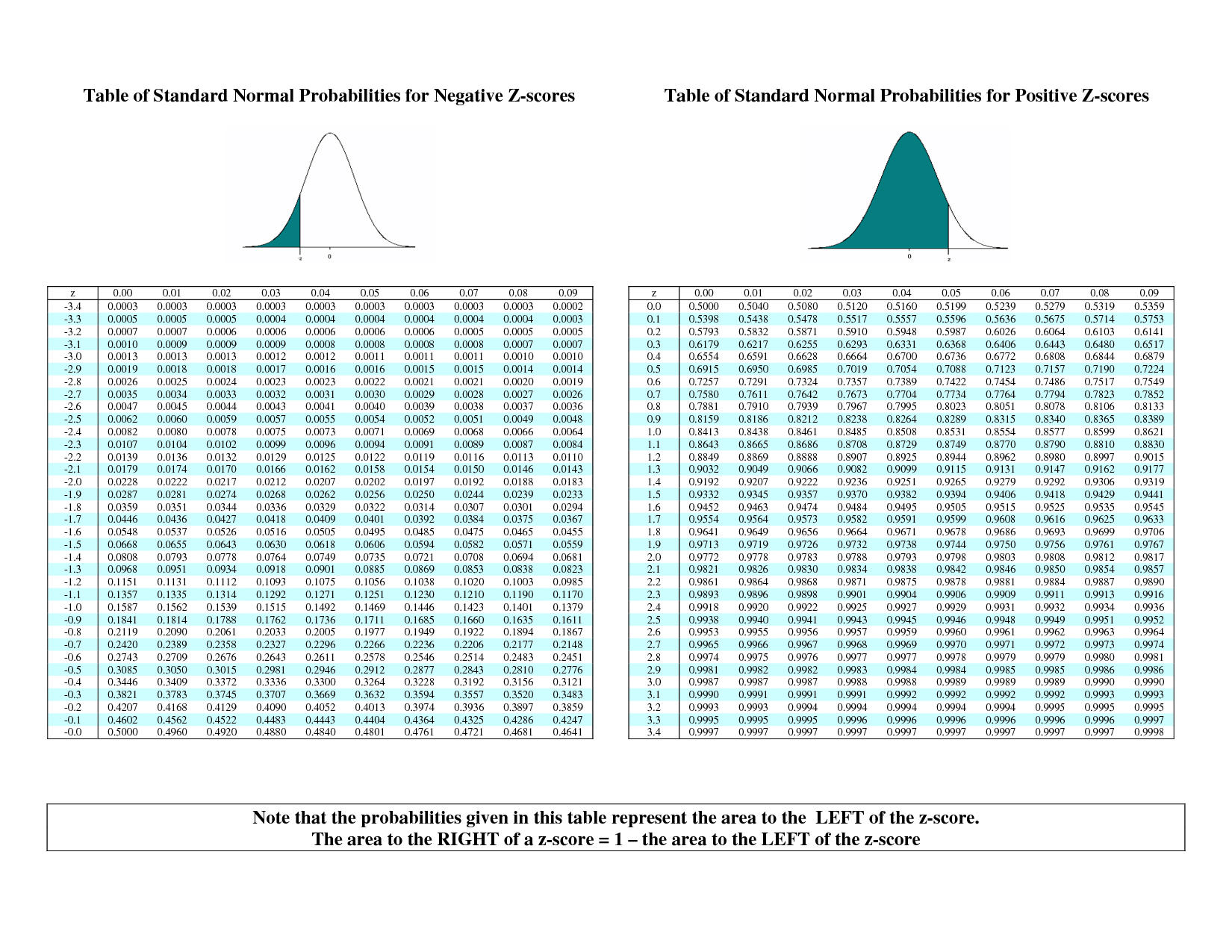class: center, middle, inverse, title-slide # 2.1 — Random Variables & Distributions ## ECON 480 • Econometrics • Fall 2020 ### Ryan Safner<br> Assistant Professor of Economics <br> <a href="mailto:safner@hood.edu"><i class="fa fa-paper-plane fa-fw"></i>safner@hood.edu</a> <br> <a href="https://github.com/ryansafner/metricsF20"><i class="fa fa-github fa-fw"></i>ryansafner/metricsF20</a><br> <a href="https://metricsF20.classes.ryansafner.com"> <i class="fa fa-globe fa-fw"></i>metricsF20.classes.ryansafner.com</a><br> --- class: inverse, center, middle # Random Variables --- # Experiments .pull-left[ - An .hi-purple[experiment] is any procedure that can (in principle) be repeated infinitely and has a well-defined set of outcomes .content-box-green[ .green[**Example**]: flip a coin 10 times ] ] .pull-right[ .center[  ] ] --- # Random Variables .pull-left[ - A .hi-purple[random variable (RV)] takes on values that are unknown in advance, but determined by an experiment - A numerical summary of a random outcome .content-box-green[ .green[**Example**]: the number of heads from 10 coin flips ] ] .pull-right[ .center[  ] ] --- # Random Variables: Notation - Random variable `\(X\)` takes on individual values `\((x_i)\)` from a set of possible values - Often capital letters to denote RV's - lowercase letters for individual values .content-box-green[ .green[**Example**]: Let `\(X\)` be the number of Heads from 10 coin flips. `\(\quad x_i \in \{0, 1, 2,...,10\}\)` ] --- class: inverse, center, middle # Discrete Random Variables --- # Discrete Random Variables .pull-left[ - A .hi[discrete random variable]: takes on a finite/countable set of possible values .content-box-green[ .green[**Example**]: Let `\(X\)` be the number of times your computer crashes this semester<sup>.red[1]</sup>, `\(x_i \in \{0, 1, 2, 3, 4\}\)` ] ] .pull-right[ .center[  ] ] .footnote[<sup>.red[1]</sup> Please, back up your files!] --- # Discrete Random Variables: Probability Distribution .pull-left[ - .hi[Probability distribution] of a R.V. fully lists all the possible values of `\(X\)` and their associated probabilities ] .pull-right[ .green[**Example**]: | `\(x_i\)` | `\(P(X=x_i)\)` | |--------|------------| | 0 | 0.80 | | 1 | 0.10 | | 2 | 0.06 | | 3 | 0.03 | | 4 | 0.01 | ] --- # Discrete Random Variables: pdf .pull-left[ .hi[Probability distribution function (pdf)] summarizes the possible outcomes of `\(X\)` and their probabilities - Notation: `\(f_X\)` is the pdf of `\(X\)`: `$$f_X=p_i, \quad i=1,2,...,k$$` - For any real number `\(x_i\)`, `\(f(x_i)\)` is the probablity that `\(X=x_i\)` ] .pull-right[ .green[**Example**]: | `\(x_i\)` | `\(P(X=x_i)\)` | |--------|------------| | 0 | 0.80 | | 1 | 0.10 | | 2 | 0.06 | | 3 | 0.03 | | 4 | 0.01 | ] -- - What is `\(f(0)\)`? -- - What is `\(f(3)\)`? --- # Discrete Random Variables: pdf Graph .pull-left[ .code50[ ```r crashes<-tibble(number = c(0,1,2,3,4), prob = c(0.80, 0.10, 0.06, 0.03, 0.01)) ggplot(data = crashes)+ aes(x = number, y = prob)+ geom_col(fill="#0072B2")+ labs(x = "Number of Crashes", y = "Probability")+ theme_classic(base_family = "Fira Sans Condensed", base_size=20) ``` ] ] .pull-right[ <img src="2.2-slides_files/figure-html/unnamed-chunk-2-1.png" width="504" /> ] --- # Discrete Random Variables: cdf .pull-left[ .hi[Cumulative distribution function (pdf)] lists probability `\(X\)` will be *at most* (less than or equal to) a given value `\(x_i\)` - Notation: `\(F_X=P(X \leq x_i)\)` ] .pull-right[ .green[**Example**]: | `\(x_i\)` | `\(f(x)\)` | `\(F(x)\)` | |--------|--------|--------| | 0 | 0.80 | 0.80 | | 1 | 0.10 | 0.90 | | 2 | 0.06 | 0.96 | | 3 | 0.03 | 0.99 | | 4 | 0.01 | 1.00 | ] -- - What is the probability your computer will crash *at most* once, `\(F(1)\)`? -- - What about three times, `\(F(3)\)`? --- # Discrete Random Variables: cdf Graph .pull-left[ .code50[ ```r crashes<-crashes %>% mutate(cum_prob = cumsum(prob)) crashes ``` ``` ## # A tibble: 5 x 3 ## number prob cum_prob ## <dbl> <dbl> <dbl> ## 1 0 0.8 0.8 ## 2 1 0.1 0.9 ## 3 2 0.06 0.96 ## 4 3 0.03 0.99 ## 5 4 0.01 1 ``` ```r ggplot(data = crashes)+ aes(x = number, y = cum_prob)+ geom_col(fill="#0072B2")+ labs(x = "Number of Crashes", y = "Probability")+ theme_classic(base_family = "Fira Sans Condensed", base_size=20) ``` ] ] .pull-right[ <img src="2.2-slides_files/figure-html/unnamed-chunk-5-1.png" width="504" /> ] --- class: inverse, center, middle # Expected Value and Variance --- # Expected Value of a Random Variable - .hi[Expected value] of a random variable `\(X\)`, written `\(E(X)\)` (and sometimes `\(\mu)\)`, is the long-run average value of `\(X\)` "expected" after many repetitions `$$E(X)=\sum^k_{i=1} p_i x_i$$` -- - `\(E(X)=p_1x_1+p_2x_2+ \cdots +p_kx_k\)` - A **probability-weighted average** of `\(X\)`, with each `\(x_i\)` weighted by its associated probability `\(p_i\)` - Also called the .hi["mean"] or .hi["expectation"] of `\(X\)`, always denoted either `\(E(X)\)` or `\(\mu_X\)` --- # Expected Value: Example I .content-box-green[ .green[**Example**]: Suppose you lend your friend $100 at 10% interest. If the loan is repaid, you receive $110. You estimate that your friend is 99% likely to repay, but there is a default risk of 1% where you get nothing. What is the expected value of repayment? ] --- # Expected Value: Example II .green[**Example**]: Let `\(X\)` be a random variable that is described by the following pdf: | `\(x_i\)` | `\(P(X=x_i)\)` | |--------|------------| | 1 | 0.50 | | 2 | 0.25 | | 3 | 0.15 | | 4 | 0.10 | Calculate `\(E(X)\)`. --- # The Steps to Calculate E(X), Coded ```r # Make a Random Variable called X X<-tibble(x_i=c(1,2,3,4), # values of X p_i=c(0.50,0.25,0.15,0.10)) # probabilities X %>% summarize(expected_value = sum(x_i*p_i)) ``` ``` ## # A tibble: 1 x 1 ## expected_value ## <dbl> ## 1 1.85 ``` --- # Variance of a Random Variable - The .hi[variance] of a random variable `\(X\)`, denoted `\(var(X)\)` or `\(\sigma^2_X\)` is: `$$\begin{align*}\sigma^2_X &= E[(x_i-\mu_X)^2]\\ &=\sum_{i=1}^n(x_i-\mu_X)^2p_i\\ \end{align*}$$` - This is the .hi-purple[expected value of the squared deviations from the mean] - i.e. the probability-weighted average of the squared deviations --- # Standard Deviation of a Random Variable - The .hi[standard deviation] of a random variable `\(X\)`, denoted `\(sd(X)\)` or `\(\sigma_X\)` is: `$$\sigma_X=\sqrt{\sigma_X^2}$$` --- # Standard Deviation: Example I .content-box-green[ .green[**Example**]: What is the standard deviation of computer crashes? ] | `\(x_i\)` | `\(P(X=x_i)\)` | |--------|------------| | 0 | 0.80 | | 1 | 0.10 | | 2 | 0.06 | | 3 | 0.03 | | 4 | 0.01 | --- # The Steps to Calculate sd(X), Coded I ```r # get the expected value crashes %>% summarize(expected_value = sum(number*prob)) ``` ``` ## # A tibble: 1 x 1 ## expected_value ## <dbl> ## 1 0.35 ``` ```r # save this for quick use exp_value<-0.35 crashes_2 <- crashes %>% select(-cum_prob) %>% # we don't need the cdf # create new columns mutate(deviations = number - exp_value, # deviations from exp_value deviations_sq = deviations^2, weighted_devs_sq = prob * deviations^2) # square deviations ``` --- # The Steps to Calculate sd(X), Coded II ```r # look at what we made crashes_2 ``` ``` ## # A tibble: 5 x 5 ## number prob deviations deviations_sq weighted_devs_sq ## <dbl> <dbl> <dbl> <dbl> <dbl> ## 1 0 0.8 -0.35 0.122 0.0980 ## 2 1 0.1 0.65 0.423 0.0423 ## 3 2 0.06 1.65 2.72 0.163 ## 4 3 0.03 2.65 7.02 0.211 ## 5 4 0.01 3.65 13.3 0.133 ``` --- # The Steps to Calculate sd(X), Coded III ```r # now we want to take the expected value of the squared deviations to get variance crashes_2 %>% summarize(variance = sum(weighted_devs_sq), # variance sd = sqrt(variance)) # sd is square root ``` ``` ## # A tibble: 1 x 2 ## variance sd ## <dbl> <dbl> ## 1 0.648 0.805 ``` --- # Standard Deviation: Example II .content-box-green[ .green[**Example**]: What is the standard deviation of the random variable we saw before? ] | `\(x_i\)` | `\(P(X=x_i)\)` | |--------|------------| | 1 | 0.50 | | 2 | 0.25 | | 3 | 0.15 | | 4 | 0.10 | Hint: you already found it's expected value. --- class: inverse, center, middle # Continuous Random Variables --- # Continuous Random Variables .pull-left[ - .hi[Continuous random variables] can take on an uncountable (infinite) number of values - So many values that the probability of any specific value is infinitely small: `$$P(X=x_i)\rightarrow 0$$` - Instead, we focus on a *range* of values it might take on ] .pull-right[ .center[  ] ] --- # Continuous Random Variables: pdf I .pull-left[ .hi[Probability *density* function (pdf)] of a continuous variable represents the probability between two values as the area under a curve - The total area under the curve is 1 - Since `\(P(a)=0\)` and `\(P(b)=0\)`, `\(P(a<X<b)=P(a \leq X \leq b)\)` .content-box-green[ .green[**Example**]: `\(P(0 \leq X \leq 2)\)` ] - See [today's class notes](/class/2.2-class) for how to graph math/stats functions in `ggplot`! ] .pull-right[ <img src="2.2-slides_files/figure-html/unnamed-chunk-10-1.png" width="504" /> ] --- # Continuous Random Variables: pdf II .pull-left[ - FYI using calculus: $$P(a \leq X \leq b) = \int_a^b f(x) dx $$ - Complicated: software or (old fashioned!) probability tables to calculate ] .pull-right[ <img src="2.2-slides_files/figure-html/unnamed-chunk-11-1.png" width="504" /> ] --- # Continuous Random Variables: cdf I .pull-left[ - The .hi[cumulative density function (cdf)] describes the area under the pdf for all values less than or equal to (i.e. to the left of) a given value, `\(k\)` `$$P(X \leq k)$$` .content-box-green[ .green[**Example**]: `\(P(X \leq 2)\)` ] ] .pull-right[ <img src="2.2-slides_files/figure-html/unnamed-chunk-12-1.png" width="504" /> ] --- # Continuous Random Variables: cdf II .pull-left[ - Note: to find the probability of values *greater* than or equal to (to the right of) a given value `\(k\)`: `$$P(X \geq k)=1-P(X \leq k)$$` .content-box-green[ .green[**Example**]: `\(P(X \geq 2) = 1 - P(X \leq 2)\)` ] ] .pull-right[ <img src="2.2-slides_files/figure-html/unnamed-chunk-13-1.png" width="504" /> .center[ `\(P(X \geq 2)=\)` area under the curve to the right of 2 ] ] --- class: inverse, center, middle # The Normal Distribution --- # The Normal Distribution I .pull-left[ - The .hi[Gaussian] or .hi[normal distribution] is the most useful type of probability distribution $$ X \sim N(\mu,\sigma)$$ - Continuous, symmetric, unimodal, with mean `\(\mu\)` and standard deviation `\(\sigma\)` ] .pull-right[ <img src="2.2-slides_files/figure-html/unnamed-chunk-14-1.png" width="504" /> ] --- # The Normal Distribution II .pull-left[ - FYI: The pdf of `\(X \sim N(\mu, \sigma)\)` is `$$P(X=k)= \frac{1}{\sqrt{2\pi \sigma^2}}e^{-\frac{1}{2}\big(\frac{(k-\mu)}{\sigma}\big)^2}$$` - **Do not try and learn this**, we have software and (previously tables) to calculate pdfs and cdfs ] .pull-right[ <img src="2.2-slides_files/figure-html/unnamed-chunk-15-1.png" width="504" /> ] --- # The 68-95-99.7 Rule .pull-left[ - .hi[68-95-99.7% empirical rule]: for a normal distribution: ] .pull-right[ <img src="2.2-slides_files/figure-html/unnamed-chunk-17-1.png" width="504" /> ] --- # The 68-95-99.7 Rule .pull-left[ - .hi[68-95-99.7% empirical rule]: for a normal distribution: - `\(P(\mu-1\sigma \leq X \leq \mu+1\sigma) \approx\)` 68% ] .pull-right[ <img src="2.2-slides_files/figure-html/unnamed-chunk-18-1.png" width="504" /> ] --- # The 68-95-99.7 Rule .pull-left[ - .hi[68-95-99.7% empirical rule]: for a normal distribution: - `\(P(\mu-1\sigma \leq X \leq \mu+1\sigma) \approx\)` 68% - `\(P(\mu-2\sigma \leq X \leq \mu+2\sigma) \approx\)` 95% ] .pull-right[ <img src="2.2-slides_files/figure-html/unnamed-chunk-19-1.png" width="504" /> ] --- # The 68-95-99.7 Rule .pull-left[ - .hi[68-95-99.7% empirical rule]: for a normal distribution: - `\(P(\mu-1\sigma \leq X \leq \mu+1\sigma) \approx\)` 68% - `\(P(\mu-2\sigma \leq X \leq \mu+2\sigma) \approx\)` 95% - `\(P(\mu-3\sigma \leq X \leq \mu+3\sigma) \approx\)` 99.7% - **68/95/99.7%** of observations fall within **1/2/3 standard deviations** of the mean ] .pull-right[ <img src="2.2-slides_files/figure-html/unnamed-chunk-20-1.png" width="504" /> ] --- # The Standard Normal Distribution .pull-left[ - The .hi-purple[standard] normal distribution (often referred to as **Z**) has mean 0 and standard deviation 1 `$$Z \sim N(0,1)$$` ] .pull-right[ <!-- --> ] --- # The Standard Normal cdf .pull-left[ - The .hi-purple[standard] normal cdf `$$\Phi(k)=P(Z \leq k)$$` ] .pull-right[ <img src="2.2-slides_files/figure-html/unnamed-chunk-22-1.png" width="504" /> ] --- # Standardizing Variables .pull-left[ - We can take any normal distribution (for any `\(\mu, \sigma)\)` and **standardize** it to the standard normal distribution by taking the .hi[Z-score] of any value, `\(x_i\)`: `$$Z=\frac{x_i-\mu}{\sigma}$$` - Subtract any value by the distribution's mean and divide by standard deviation - `\(Z\)`: number of standard deviations `\(x_i\)` value is away from the mean ] .pull-right[ <img src="2.2-slides_files/figure-html/unnamed-chunk-23-1.png" width="504" /> ] --- # Standardizing Variables: Example .content-box-green[ .smallest[ .hi-green[**Example**]: On August 8, 2011, the Dow dropped 634.8 points, sending shock waves through the financial community. Assume that during mid-2011 to mid-2012 the daily change for the Dow is normally distributed, with the mean daily change of 1.87 points and a standard deviation of 155.28 points. What is the `\(Z\)`-score? ] ] -- .smallest[ `$$Z = \frac{X - \mu}{\sigma}$$` ] -- .smallest[ `$$Z = \frac{634.8-1.87}{155.28}$$` ] -- .smallest[ `$$Z = -4.1$$` This is 4.1 standard deviations `\((\sigma)\)` beneath the mean, an *extremely* low probability event. ] --- # Standardizing Variables: From X to Z I .smallest[ .content-box-green[ .green[**Example**]: In the last quarter of 2015, a group of 64 mutual funds had a mean return of 2.4% with a standard deviation of 5.6%. These returns can be approximated by a normal distribution. What percent of the funds would you expect to be earning between -3.2% and 8.0% returns? ] ] -- .smaller[ Convert to standard normal to find `\(Z\)`-scores for `\(8\)` and `\(-3.2.\)` `$$P(-3.2 < X < 8)$$` ] -- .smaller[ `$$P(\frac{-3.2-2.4}{5.6} < \frac{X-2.4}{5.6} < \frac{8-2.4}{5.6})$$` ] -- .smaller[ `$$P(-1 < Z < 1)$$` ] -- .smaller[ `$$P(X \pm 1\sigma)=0.68$$` ] --- # Standardizing Variables: From X to Z II <img src="2.2-slides_files/figure-html/unnamed-chunk-24-1.png" width="504" style="display: block; margin: auto;" /> <img src="2.2-slides_files/figure-html/unnamed-chunk-25-1.png" width="504" style="display: block; margin: auto;" /> --- # Standardizing Variables: From X to Z III .content-box-blue[ .blue[**You Try**]: In the last quarter of 2015, a group of 64 mutual funds had a mean return of 2.4% with a standard deviation of 5.6%. These returns can be approximated by a normal distribution. 1. What percent of the funds would you expect to be earning between -3.2% and 8.0% returns? 2. What percent of the funds would you expect to be earning 2.4% or less? 3. What percent of the funds would you expect to be earning between -8.8% and 13.6%? 4. What percent of the funds would you expect to be earning returns greater than 13.6%? ] --- # Finding Z-score Probabilities I - How do we actually find the probabilities for `\(Z-\)`scores? -- .center[  ] --- # Finding Z-score Probabilities II .pull-left[ Probability to the **left** of `\(z_i\)` `$$P(Z \leq z_i)= \underbrace{\Phi(z_i)}_{\text{cdf of }z_i}$$` <img src="2.2-slides_files/figure-html/unnamed-chunk-26-1.png" width="504" style="display: block; margin: auto;" /> ] .pull-right[ Probability to the **right** of `\(z_i\)` `$$P(Z \geq z_i)= 1-\underbrace{\Phi(z_i)}_{\text{cdf of }z_i}$$` <img src="2.2-slides_files/figure-html/unnamed-chunk-27-1.png" width="504" style="display: block; margin: auto;" /> ] --- # Finding Z-score Probabilities III Probability **between** `\(z_1\)` and `\(z_2\)` `$$P(z_1 \geq Z \geq z_2)= \underbrace{\Phi(z_2)}_{\text{cdf of }z_2} - \underbrace{\Phi(z_1)}_{\text{cdf of }z_1}$$` <img src="2.2-slides_files/figure-html/unnamed-chunk-28-1.png" width="504" style="display: block; margin: auto;" /> --- # Finding Z-score Probabilities IV .pull-left[ - `pnorm()` calculates `p`robabilities with a `norm`al distribution with arguments: - `mean = ` the mean - `sd = ` the standard deviation - `lower.tail = ` - `TRUE` if looking at area to *LEFT* of value - `FALSE` if looking at area to *RIGHT* of value ] .pull-right[ <img src="2.2-slides_files/figure-html/unnamed-chunk-29-1.png" width="504" style="display: block; margin: auto;" /> ] --- # Finding Z-score Probabilities IV .pull-left[ .content-box-green[ .green[**Example**:] Let the distribution of grades be normal, with mean 75 and standard deviation 10. ] - Probability a student gets **at least an 80** ```r pnorm(80, mean = 75, sd = 10, lower.tail = FALSE) # looking to right ``` ``` ## [1] 0.3085375 ``` ] .pull-right[ <img src="2.2-slides_files/figure-html/unnamed-chunk-31-1.png" width="504" style="display: block; margin: auto;" /> ] --- # Finding Z-score Probabilities V .pull-left[ .content-box-green[ .green[**Example**:] Let the distribution of grades be normal, with mean 75 and standard deviation 10. ] - Probability a student gets **at most an 80** ```r pnorm(80, mean = 75, sd = 10, lower.tail = TRUE) # looking to left ``` ``` ## [1] 0.6914625 ``` ] .pull-right[ <img src="2.2-slides_files/figure-html/unnamed-chunk-33-1.png" width="504" style="display: block; margin: auto;" /> ] --- # Finding Z-score Probabilities VI .pull-left[ .content-box-green[ .green[**Example**:] Let the distribution of grades be normal, with mean 75 and standard deviation 10. ] .smaller[ - Probability a student gets **between a 65 and 85** ] .code50[ ```r # subtract two left tails! pnorm(85, # larger number first! mean = 75, sd = 10, lower.tail = TRUE) - # looking to left, & SUBTRACT pnorm(65, # smaller number second! mean = 75, sd = 10, lower.tail = TRUE) #looking to left ``` ``` ## [1] 0.6826895 ``` ] ] .pull-right[ <img src="2.2-slides_files/figure-html/unnamed-chunk-35-1.png" width="504" style="display: block; margin: auto;" /> ]